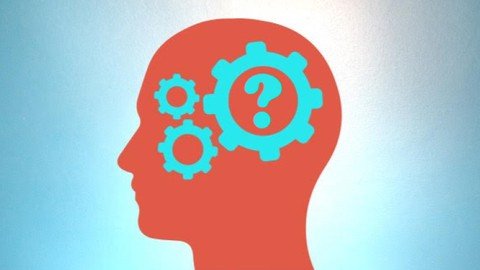Misinformation: What Can We Trust?
- 09.11.2022
- 40

Misinformation: What Can We Trust?
Published 10/2022
MP4 | Video: h264, 1280x720 | Audio: AAC, 44.1 KHz
Language: English | Size: 1.25 GB | Duration: 3h 7m
False and misleading information is everywhere. Learn to recognize misinformation and navigate a world filled with it.
What you'll learn
Learn about the mental biases that make us vulnerable to misinformation
Determine the credibility of websites and articles
Parse and research specific statements
Learn to ask challenging questions when presented with information
Understand certain statistical and scientific concepts (no math skills needed!)
Requirements
No requirements needed. It's helpful to know how to Google things!
Description
This 5-section course is designed to help students identify misinformation, understand why people fall for it, and explain how we can navigate a world filled with it.In the first section of this course, you will learn the psychological reasons why people fall for misinformation. Among other things, we will cover• how human bias and group identity can lead us astray • an examination of conspiracy theories and their appealIn the second and third sections, we focus on learning about and recognizing various forms of misinformation. We address• the characteristics of good journalism• examples of misinformation in the media and social media• how to parse and research specific claims• how to judge the credibility of websites or articles• how to ask challenging questions when presented with informationIn the fourth section, you will learn how to think scientifically. We will cover• the difference between scientific and unscientific thinking• how people reach bad conclusions by not understanding certain statistical and scientific concepts (no math done in class!)The final class is an immersive exercise where everything is put into practice. We will read an article with a comment section, and then assess the quality of this information. We then learn more about this topic through internet searches and supplementary articles.There are few things more important than separating fact from fiction. Come join us in this highly relevant course to learn how to protect against misinformation!Fair warning: This will be a fun class, where silly examples of misinformation will be given, and with fun exercises to engage students. However, it will not be limited to just that. Misinformation is worth learning about because it affects important topics. Serious, real-life examples will be discussed, as well, including those that involve violence. I do not delve deeply into these topics, but they do get brought up. Also, if it bothers you to scrutinize Democrats, Republicans, left-leaning media, right-leaning media, and uninformed social media posts, this class is not for you!
Overview
Section 1: How and Why People Get Things Wrong
Lecture 1 How discomfort can lead us to lies
Lecture 2 Group identity
Lecture 3 What is bias?
Lecture 4 Examples of bias
Lecture 5 Conspiracy theories
Lecture 6 Why conspiracy theories appeal to people
Section 2: How to Recognize Misinformation in the World
Lecture 7 The qualities of good journalism
Lecture 8 How stories can be reported differently
Lecture 9 Media bias
Lecture 10 Information voids and fact checkers
Lecture 11 Analyzing statements
Section 3: More Misinformation, More Ways to Deal with it
Lecture 12 Misleading descriptions
Lecture 13 Where there is smoke, there may not be fire
Lecture 14 Vertical vs. lateral reading strategies
Lecture 15 Practicing lateral reading
Section 4: How to Reason in a World Filled with Misinformation
Lecture 16 Scientific method
Lecture 17 Unscientific thinking vs. scientific thinking
Lecture 18 Correlation and causation
Lecture 19 Misleading connections
Lecture 20 The anatomy of arguments
Lecture 21 Non-representative sample
Lecture 22 Non-representative sample examples
Lecture 23 Small sample size
Section 5: Using Clues to Separate Fact from Fiction
Lecture 24 Analyzing an article
Lecture 25 Comment section #1
Lecture 26 Comment section #2
Lecture 27 Supplemental articles
Lecture 28 Final analysis and parting thoughts
This course was designed for curious teenagers who want to learn how to separate fact from fiction. However, it can benefit an older audience as well.
Screenshots
#
https://rapidgator.net/file/698b16a24f0ed3fb06c7b9a5cd1e0112/Misinformation_What_Can_We_Trust.part1.rar.html
https://rapidgator.net/file/2e6a7b6cce90816a23e68697d2511e26/Misinformation_What_Can_We_Trust.part2.rar.html
https://uploadgig.com/file/download/79ce49C96a907d56/Misinformation%20What%20Can%20We%20Trust.part1.rar
https://uploadgig.com/file/download/dBc45C053b828232/Misinformation%20What%20Can%20We%20Trust.part2.rar
https://rapidgator.net/file/2e6a7b6cce90816a23e68697d2511e26/Misinformation_What_Can_We_Trust.part2.rar.html
https://uploadgig.com/file/download/79ce49C96a907d56/Misinformation%20What%20Can%20We%20Trust.part1.rar
https://uploadgig.com/file/download/dBc45C053b828232/Misinformation%20What%20Can%20We%20Trust.part2.rar